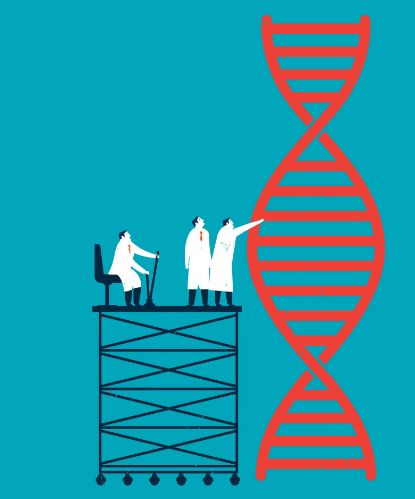Current context:
The Department of Biotechnology (DBT) has officially announced the completion of the ‘10,000 genome’ project, which aimed to create a reference database of whole-genome sequences in India.
About current context:
- In 2006, India sequenced its complete human genome, establishing a diverse database that represents the country’s population’s diversity.
- The United Kingdom, China, and the United States are among the countries that have programmes to sequence at least 1,00,000 of their genomes.

What is genome sequencing?
- Genome sequencing is a groundbreaking scientific method that has significantly enhanced our comprehension of genetics and led to significant discoveries.
- Genome sequencing is the systematic method of identifying the precise sequence of bases within an organism’s entire genome.
- A genome is the complete set of DNA instructions in a cell, containing all the genetic information necessary for an organism’s development and functioning.
The Role of Genes:
- Genes are specific DNA units that contain instructions for protein production.
- Proteins are essential components in an organism’s physiology and function.
Whole Genome Sequencing:
- All living organisms, from bacteria to mammals, possess their own distinct genetic code or genome.
- Whole genome sequencing is a single-step laboratory procedure that determines the order of bases in an organism’s genome.
Let’s explore the steps involved:
- DNA Shearing: Scientists use molecular scissors to cut an organism’s DNA into smaller pieces. These fragments are small enough for sequencing machines to read.
- DNA Barcoding: Small DNA tags (bar codes) are added to identify which piece of sheared DNA belongs to which organism.
- DNA Sequencing: Bar-coded DNA from multiple organisms is combined and placed in a DNA sequences. The sequencer identifies the A, C, T, and G bases for each bacterial sequence.
The Genetic Alphabet
- Deoxyribonucleic acid (DNA) is a chemical substance that provides instructions for regulating growth and development.
- DNA is composed of two twisted strands, forming the iconic double helix structure.
- The strands are made up of four nucleotide bases: adenine (A), thymine (T), guanine (G), and cytosine ©.
Applications of Genome Sequencing:
- Personalized Medicine: Genome sequencing enables tailoring medical treatments based on an individual’s genetic makeup.
- Disease Diagnosis: Identifying genetic variations associated with diseases helps in early diagnosis and targeted therapies.
- Agriculture and Biotechnology: Genome sequencing aids in crop improvement, pest resistance, and livestock breeding.
- Evolutionary Studies: Comparing genomes across species sheds light on evolutionary relationships.
Challenges:
- The Genetic Information Processing (GIP) project in India raises concerns about scientific racism, data privacy, and ethical issues.
- It raises questions about the potential for genetic mapping to reinforce stereotypes and deepen existing identity politics.
- The lack of a comprehensive data privacy bill further complicates matters.
- Ethical concerns include the potential for gene modification or selective breeding.
Genome India Project:
- The Genome India Project aims to sequence the genomes of thousands of Indian individuals.
- It will provide insights into population genetics, disease susceptibility, and personalized healthcare.
- The project’s significance lies in understanding India’s genetic diversity and addressing health challenges.

